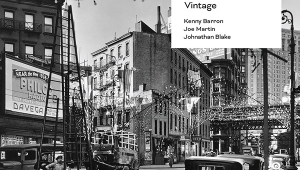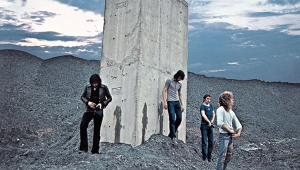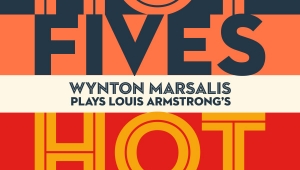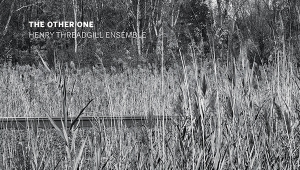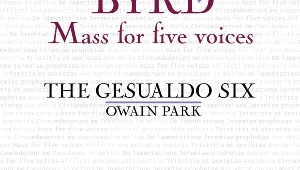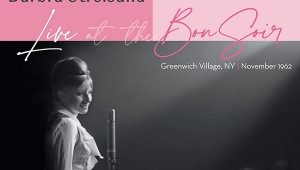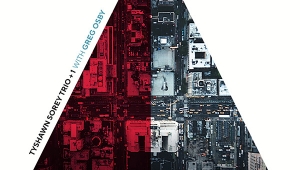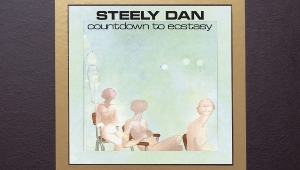| Columns Retired Columns & Blogs |
Recording of May 2012: Centennial
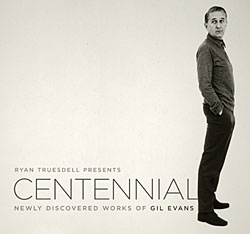 Ryan Truesdell: Centennial: Newly Discovered Works of Gil Evans
Ryan Truesdell: Centennial: Newly Discovered Works of Gil EvansRyan Truesdell, conductor; 35 musicians including those mentioned in text, plus: Scott Robinson, Charles Pillow, reeds; Greg Gisbert, trumpet; Marcus Rojas, tuba; Romero Lubambo, guitar; Lewis Nash, drums
ArtistShare AS0114 (CD). 2012. Ryan Truesdell, prod.; James Farber, eng. DAD. TT: 74:18
Performance *****
Sonics ****½
It is dreamlike when the opening track, "Punjab," begins so softly, with the tapping of a tabla. Exotic woodwinds, perhaps English horn and bassoon, murmur in the left channel, whisper in the right. It is dreamlike because Gil Evans died in 1988, yet this unfamiliar music sounds like him, and when suddenly that deep, solemn brass figure looms out of the right channel, it could only be him. More instruments enter, and more motifs, with brighter colors from alto saxophone and flute. Like all the greatest Gil Evans music, "Punjab" creates its own world of high drama and mysterious allusion. It belongs in the exalted company of such Evans masterpieces as Out of the Cool and Sketches of Spain. And it is new.
Of course, there is a story. Ryan Truesdell is a young composer-arranger who has worked as an assistant to Maria Schneider, and who coproduced her Grammy-winning albums Sky Blue and Concert in the Garden. Knowing that the Evans arrangements in circulation were often inaccurate transcriptions, Truesdell wanted to see the sources, the original manuscripts. He was the first outside person granted access to the Evans family archives, and he found other material in university libraries, the Library of Congress, and the personal collections of musicians. Truesdell located the original orchestrations for many pieces from well-known albums, and also discovered over 50 scores for which he could find no record of a recording. Ten of these arrangements appear on Centennial, so named because its release date of May 13, 2012, is the 100th anniversary of Evans's birth. There are two original Evans compositions, including "Punjab."
Truesdell has done it right. He assembled some of the strongest session players and jazz soloists in New York, and used a world-class combination of engineer and studio: James Farber at Avatar.
"Punjab" was composed for the classic 1964 Verve album The Individualism of Gil Evans, but did not appear on that record. Like all the greatest Evans arrangements, it builds and builds until it releases with soaring, life-affirming power. Two brilliant solos are burned into it, one by pianist Frank Kimbrough, and one by alto saxophonist Steve Wilson, who sounds like a man flailing toward freedom and peace.
There are two other major works on Centennial: Kurt Weill's "Barbara Song," in a 12-minute arrangement; and a 19-minute medley, "Waltz/Variation on the Misery/So Long." They originated, sometimes in different or partial form, on the Individualism album. But Centennial uses arrangements that Evans completely revamped for an expanded ensemble of 24 instruments, for a 1971 Berlin concert. (The band on Individualism had 13 players.) Truesdell found the complete scores in the possession of the Evans family. They had never been recorded. Until now.
"Barbara Song" is longer and richer and deeper and harmonically denser than the earlier arrangement. Like all the greatest Evans music, it seems to deal in Last Things. It has that inevitability, that finality. Through its vast soundscape, the vibraphone of Joe Locke winds like human spirit, seeking and aspiring. The medley is an enormous, rapt, evolving narrative containing definitive solo statements from trombonist Marshall Gilkes, Locke, Wilson, and tenor saxophonist Donny McCaslin.
There are seven shorter pieces, five of them written for the Claude Thornhill band in the late 1940s. They are lighter, less imposing, but they still reveal the Evans touch in their intricacy and grace. In Truesdell's interpretations they sound contemporary, even "How About You." Evans also arranged for singers, and there are three vocal tracks. Kate McGarry, Wendy Gilles, and Luciana Souza all sound authentically in character. Souza's blissful "Look to the Rainbow" ends Centennial like an act of faith. It was arranged for the title track of Astrud Gilberto's 1966 Verve album but never used. Evans was an existentialist who understood joy.
One of the revelations of Centennial is the opportunity to hear a Gil Evans orchestra, for the first time, in high-resolution sound. Engineer James Farber had to use every available channel in Avatar's Studio A, and took 10 days to mix to analog tape. The outcome is stunning. It is finally possible to experience all the inner detail of an Evans ensemble, and to ride aloft with the orchestra when it erupts. The stereo separation is bold. Music might flicker from any point across a wide plane. The only sonic issue is Truesdell's decision to place the voices too far back in the mix.
Centennial is available only online. For more information, including purchase options, go to www.gilevansproject.com.—Thomas Conrad
- Log in or register to post comments



